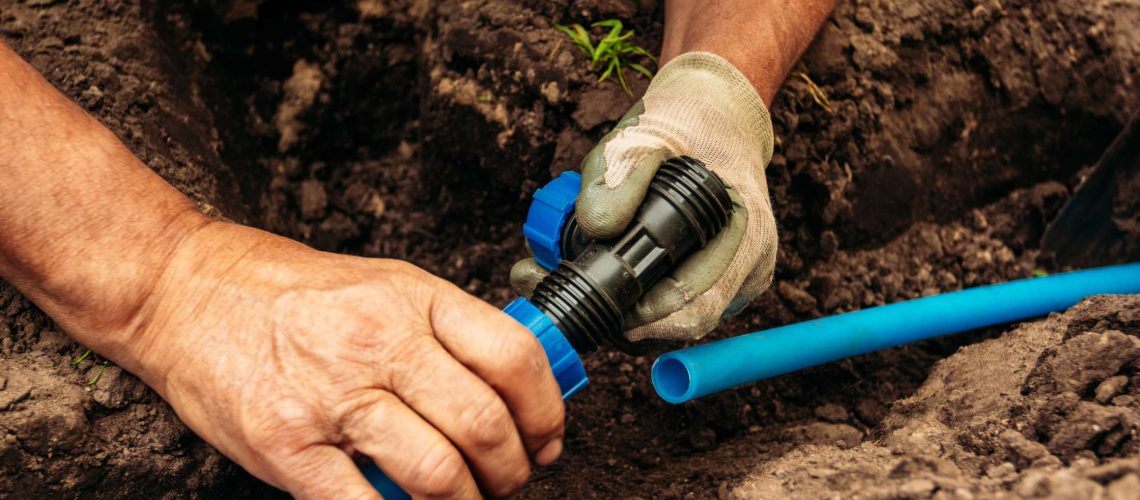If you’re wondering about an irrigation audit, it’s all about improving efficiency. By evaluating your system, you can pinpoint leaks, overwatering, or inefficiencies. This helps you save money on water bills and promotes environmental sustainability. Want to learn more about the benefits, key components, and steps of an audit? Start by understanding why auditing is crucial for your irrigation system’s performance and your plant’s health. And…
Importance of Irrigation Audits
Understanding the significance of irrigation audits is crucial for maximizing water efficiency and optimizing plant growth on your property. By conducting regular audits, you can identify potential issues such as leaks, overwatering, or inefficient watering practices that may be wasting water and harming your plants. These audits provide valuable insights into the performance of your irrigation system, allowing you to make informed decisions on adjustments or upgrades needed to enhance its efficiency.
Moreover, irrigation audits help you save money on water bills by ensuring that you aren’t using more water than necessary. By fine-tuning your system based on audit results, you can achieve significant savings in the long run. Additionally, auditing your irrigation system promotes environmental sustainability by reducing water waste and minimizing the impact on local water resources.
Benefits of Conducting Audits
To maximize efficiency and optimize plant growth, conducting irrigation audits offers a range of benefits beyond just cost savings and environmental sustainability. When you invest the time and resources into auditing your irrigation system, you can expect to reap the following benefits:
Improved Plant Health: By ensuring that your plants receive the right amount of water at the right times, you can promote healthier growth and reduce the risk of diseases caused by over or under-watering.
Water Conservation: Audits help identify leaks, inefficiencies, and water waste, allowing you to conserve water resources while still meeting the needs of your plants.
Cost Efficiency: With a well-audited system in place, you can lower your water bills, reduce energy costs associated with pumping water, and potentially extend the lifespan of your irrigation equipment.
Key Components of an Audit
Begin by evaluating the distribution uniformity of your irrigation system to identify areas for improvement. Distribution uniformity measures how evenly water is applied across your landscape. It’s crucial for ensuring that all areas receive adequate water without wastage.
Next, assess your irrigation system’s precipitation rate. This component determines the amount of water delivered per unit of time. Discrepancies in precipitation rates can lead to over or under-watering in different zones, affecting plant health and water efficiency.
Check the coverage of your sprinklers or emitters. Make sure they’re reaching all intended areas and not spraying sidewalks, driveways, or other non-vegetated surfaces. Proper coverage ensures that water is directed where it’s needed most.
Lastly, examine the scheduling and programming of your irrigation controller. Ensure it’s set correctly based on the water needs of your plants, the soil type, and weather conditions. Adjusting these settings can significantly improve the efficiency of your irrigation system.
Steps to Perform an Audit
Assess the distribution uniformity and precipitation rate of your irrigation system to ensure efficient water delivery and coverage across your landscape.
To perform an irrigation audit effectively, follow these steps:
Place Catch Cups: Position catch cups randomly across your lawn to collect water and measure precipitation rates accurately.
Run Irrigation System: Turn on your irrigation system for a set amount of time to allow the catch cups to gather water and provide data on distribution uniformity.
Analyze Results: Measure the amount of water collected in each catch cup and calculate the average precipitation rate. Use this data to determine if certain areas of your landscape are receiving too little or too much water.
Maximizing Irrigation Efficiency
Improve your landscape’s water usage efficiency by implementing strategic irrigation practices.
Start by scheduling your irrigation system to run during the early morning hours when temperatures are cooler, reducing water loss due to evaporation.
Adjust sprinkler heads to avoid watering sidewalks or driveways, ensuring water is directed only where needed.
Consider installing a rain sensor to prevent the system from running during or after rainfall, saving water and lowering utility costs.
Regularly inspect and maintain your irrigation system to check for leaks, clogs, or damaged components that could lead to inefficient water distribution.
Upgrade to water-efficient sprinkler nozzles or drip irrigation systems to deliver water directly to plant roots with minimal waste.
Achieve a Healthier, More Efficient Landscape With The Mudhouse
An irrigation audit is a crucial process that evaluates the efficiency and performance of your irrigation system, helping to conserve water and reduce costs. By identifying issues such as leaks, uneven water distribution, and system malfunctions, an irrigation audit ensures your landscape receives optimal care.
At The Mudhouse, our team of experts is dedicated to providing thorough and accurate irrigation audits. We use advanced techniques to assess your system and recommend improvements that can save you money and protect the environment.
Contact The Mudhouse today at 239-657-2429 to schedule your irrigation audit.

